How ABA Therapy Supports Children with Anxiety


Understanding ABA Therapy's Impact on Anxiety in Children
Anxiety in children, particularly those with autism, presents unique challenges that require specialized strategies for effective management. Among various therapeutic approaches, Applied Behavior Analysis (ABA) therapy has gained recognition for its structured methods and measurable results. This article explores how ABA therapy supports children struggling with anxiety by focusing on behavioral modifications, skill development, and family involvement, ultimately promoting improved social functioning and quality of life.
A Spectrum of Therapeutic Approaches in Children's Mental Health
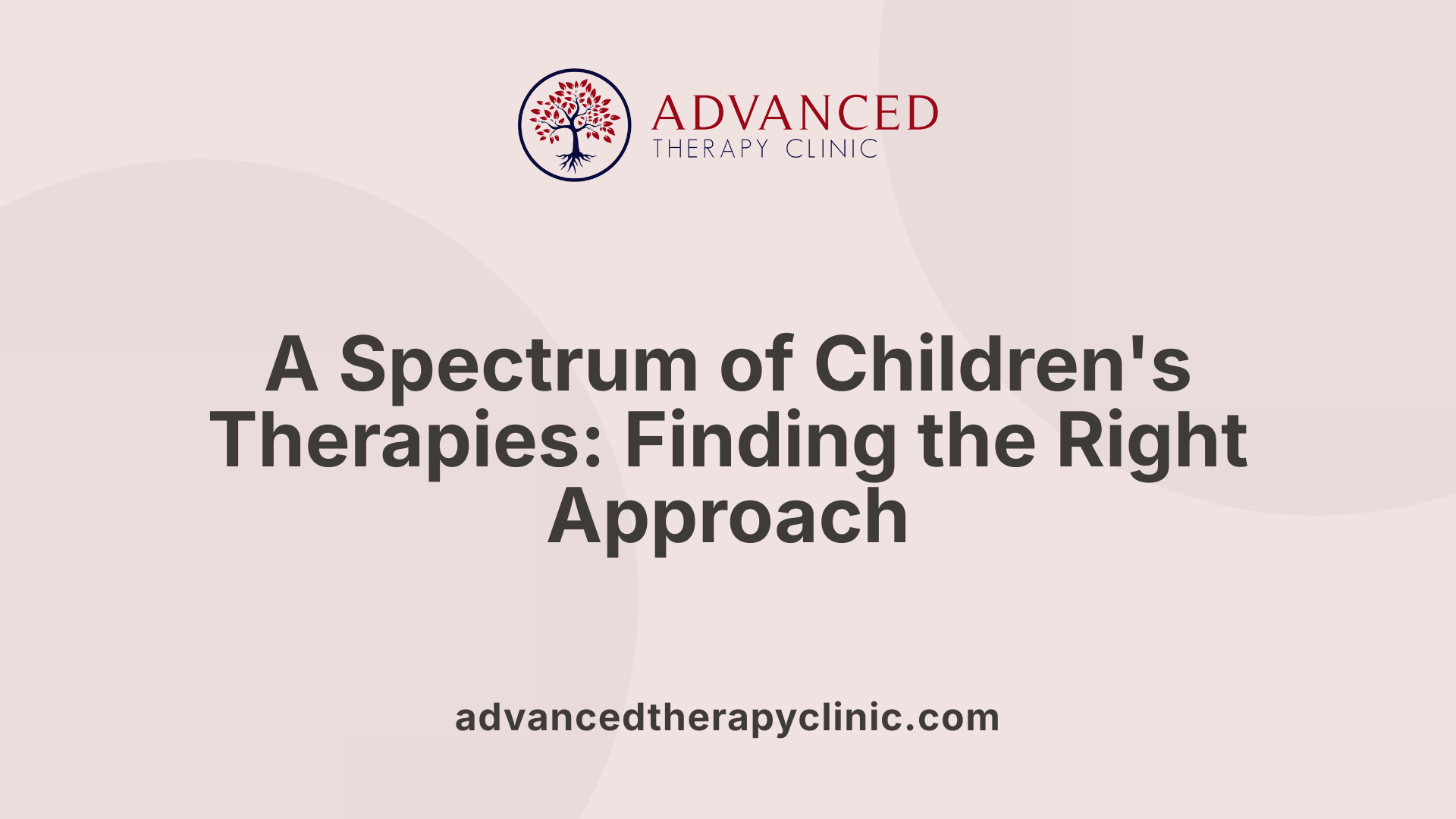
What are the main types of therapy included in the collective term for therapy-related fields?
Therapy-related fields encompass a wide range of approaches designed to support mental health and well-being. Behavioral therapies such as Applied Behavior Analysis (ABA) therapy and behavior therapy (which includes techniques like systematic desensitization and exposure therapy) are prominent examples. These focus on modifying behaviors through reinforcement and gradual exposure to triggers.
Cognitive therapies, including Cognitive Behavioral Therapy (CBT) and its variations like Mindfulness-Based Cognitive Therapy (MBCT), emphasize changing thought patterns to influence emotions and behavior. Psychodynamic and psychoanalytic therapies explore unconscious motivations behind behaviors and emotions, aiming for insight and resolution.
Humanistic therapies prioritize personal growth and understanding, employing methods like client-centered and gestalt therapy. Integrative or holistic therapies combine parts of multiple approaches to tailor treatment to individual needs. Additionally, talking therapies, such as counseling and guided self-help, provide support through dialogue and reflection.
How does ABA therapy distinguish itself within broader therapeutic contexts?
Among these diverse approaches, ABA therapy is distinct for its structured use of reinforcement and data-driven decision-making to shape behavior. It breaks down complex tasks through task analysis and focuses on individualization and generalization of learned skills. ABA is particularly effective in supporting children with autism by addressing challenges such as anxiety through social skills training, systematic desensitization, and teaching coping mechanisms.
ABA therapy also emphasizes collaboration between therapists and families, ensuring consistency and reinforcement of skills outside of therapy sessions. Early intervention using ABA has shown long-term benefits, including sustained skill acquisition, reduced anxiety, and improved social interactions, thereby enhancing the overall quality of life for children with autism.
| Therapy Type | Approach Focus | Application Examples |
|---|---|---|
| Behavioral Therapies | Reinforcement, behavior modification | ABA, systematic desensitization, exposure therapy |
| Cognitive Therapies | Thought pattern changes to affect emotions | CBT, MBCT |
| Psychodynamic Therapies | Unconscious motivations and past experiences | Psychoanalysis, psychodynamic therapy |
| Humanistic Therapies | Personal growth and self-understanding | Client-centered, gestalt therapy |
| Integrative Therapies | Combines multiple therapeutic elements | Customized treatment plans |
| Talking Therapies | Support through conversation and reflection | Counseling, guided self-help |
Core Principles of ABA Therapy and Their Relevance to Anxiety
What are the key principles of ABA therapy?
ABA therapy is grounded in several important principles that guide its approach to modifying behavior. These include:
- Reinforcement: Encouraging desirable behaviors by rewarding them to increase their occurrence.
- Task Analysis: Breaking complex tasks into smaller, manageable steps to facilitate learning.
- Data-Driven Decision Making: Collecting and analyzing data to tailor interventions effectively.
- Individualization: Customizing therapy plans to meet each child's unique needs.
- Generalization: Helping skills learned in therapy transfer to real-life settings.
How do these principles support behavior modification in anxiety?
Using these principles, ABA therapy systematically addresses anxiety in children with autism. For example, reinforcement techniques strengthen positive coping behaviors while reducing anxiety-driven actions. Task analysis allows gradual exposure to anxiety-provoking situations by breaking them down into manageable parts, which aligns with behavioral techniques like systematic desensitization.
Data-driven approaches ensure that interventions adapt based on observed progress, which is crucial for managing fluctuating anxiety symptoms. Individualized plans incorporate each child’s specific anxiety triggers and strengths, enhancing effectiveness. Lastly, generalization ensures that the coping strategies and social skills learned during therapy extend beyond clinical settings, leading to reduced anxiety and improved everyday functioning.
Through this structured and personalized framework, ABA therapy supports sustainable behavioral improvements that help children better manage anxiety and improve their quality of life.
Behavioral Techniques in ABA Therapy for Reducing Anxiety
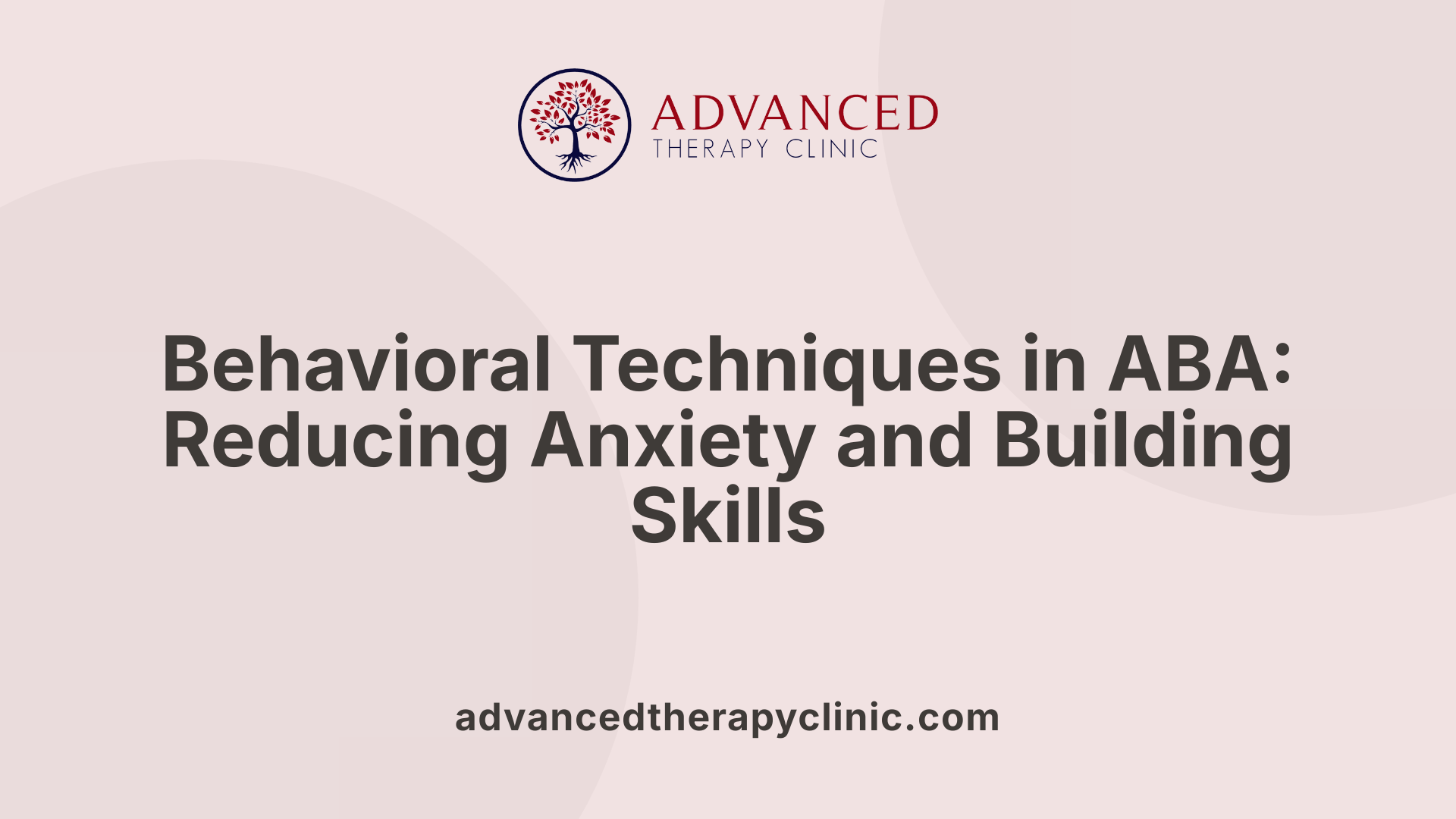
How Does ABA Use Reinforcement Strategies to Manage Anxiety?
ABA therapy employs positive reinforcement to encourage desirable behaviors and reduce anxiety-related reactions in children with autism. By rewarding calm responses and adaptive coping behaviors, therapists help children associate positive outcomes with managing stressful or anxiety-inducing situations. This method strengthens skill acquisition and promotes long-lasting behavioral improvements.
What Role Does Systematic Desensitization Play in ABA?
Systematic desensitization is a step-by-step behavioral technique used in ABA to help children gradually face anxiety-provoking stimuli or situations. Starting with low anxiety triggers and slowly increasing exposure levels, this approach allows children to build tolerance and reduce fear responses safely and effectively.
How Is Exposure Therapy Incorporated in ABA for Anxiety?
Exposure therapy, often overlapping with systematic desensitization, introduces children to challenging social or environmental scenarios in a controlled way. This gradual exposure helps decrease avoidance behaviors by teaching children to confront and manage anxiety triggers through repeated, supported experiences.
What Is the Purpose of Functional Analysis in ABA Therapy?
Functional analysis involves identifying specific anxiety triggers and the functions of certain anxiety-related behaviors. By understanding what causes anxiety reactions, therapists can tailor interventions to address these triggers directly and develop coping strategies that build adaptive, alternative behaviors.
By combining these behavioral techniques, ABA therapy offers a comprehensive framework to reduce anxiety symptoms in children with autism, enhancing their social interaction skills and overall well-being.
ABA Therapy’s Approach to Identifying and Managing Anxiety Triggers
How Does ABA Therapy Identify Anxiety Triggers?
ABA therapy starts by carefully observing and analyzing a child's behavior to pinpoint specific situations or stimuli that provoke anxiety. Through functional analysis, therapists gather data on what triggers anxious responses and the context in which these occur. This detailed understanding allows for personalized intervention plans tailored to each child's unique needs.
How Are Coping Strategies Developed?
Once triggers are identified, ABA therapists work on developing effective coping strategies. Techniques such as systematic desensitization and graduated exposure gradually introduce children to anxiety-provoking scenarios in a controlled, supportive environment. This controlled exposure helps children learn to manage their emotional responses over time.
Additionally, ABA therapy teaches calming and relaxation techniques, empowering children with self-regulation skills that improve their ability to handle stress and discomfort.
How Does ABA Help Build Adaptive Behaviors?
ABA emphasizes reinforcing positive behaviors to replace anxiety-driven reactions. By applying positive reinforcement and social skills training, therapists help children develop alternative, adaptive behaviors that improve their social interactions and reduce anxiety symptoms.
Family involvement is critical in this process, as parents reinforce these new skills and coping mechanisms consistently outside therapy sessions. Individualized treatment plans ensure that interventions are relevant and effective for each child's specific circumstances, fostering long-term success.
Through this comprehensive approach—identifying anxiety triggers, teaching coping strategies, and building adaptive behaviors—ABA therapy supports children with autism in managing anxiety and enhancing their overall quality of life.
Enhancing Social Skills Through ABA to Alleviate Social Anxiety
How does ABA therapy incorporate social skills training?
ABA therapy uses structured social skills training to improve interactions for children with autism. By breaking down social tasks into manageable steps, therapists teach children how to communicate, share, and understand social cues. This gradual learning helps build confidence in social settings.
In what ways does ABA help manage social anxiety?
ABA addresses social anxiety by combining social skills practice with behavioral techniques like systematic desensitization and exposure therapy. Children are gradually introduced to social situations that trigger anxiety, allowing them to build tolerance and reduce fear responses over time.
What calming and relaxation techniques are taught in ABA?
ABA therapy teaches calming strategies such as deep breathing, progressive muscle relaxation, and mindfulness exercises. These techniques help children manage physiological responses to anxiety, promoting emotional regulation during stressful or socially demanding situations.
Through personalized plans and consistent support, ABA therapy equips children with practical tools to overcome social anxiety and engage more comfortably in social environments.
The Vital Role of Family Collaboration in ABA Therapy Success
Why is parent-therapist collaboration important in ABA therapy?
Effective collaboration between parents and therapists is essential for optimizing the benefits of ABA therapy for children with autism and anxiety. Parents provide valuable insights into their child's unique behaviors and triggers, helping shape individualized treatment plans. Active cooperation ensures that interventions remain consistent both in therapy sessions and at home.
How do regular updates and active participation contribute to treatment outcomes?
Regular communication between therapists and families fosters transparency and allows for ongoing adjustments based on the child's progress. Parents who participate actively in therapy sessions and practice recommended strategies at home reinforce positive behaviors and coping mechanisms. This continual feedback loop supports sustained improvements and quicker adaptations when challenges arise.
What role does consistency in treatment approaches play?
Consistency across environments is crucial for children to generalize new skills and reduce anxiety effectively. When families and therapists align on goals and intervention methods, children receive a coherent message about acceptable behaviors and coping strategies. This prevents confusion and promotes confidence in managing anxiety-provoking situations.
Overall, collaboration with families ensures that ABA therapy is tailored, continuous, and reinforced beyond clinical settings. This cohesive effort dramatically enhances the therapy's success and supports lasting benefits in reducing anxiety and improving social skills for children with autism.
Individualized Treatment Plans: Tailoring ABA Therapy for Each Child
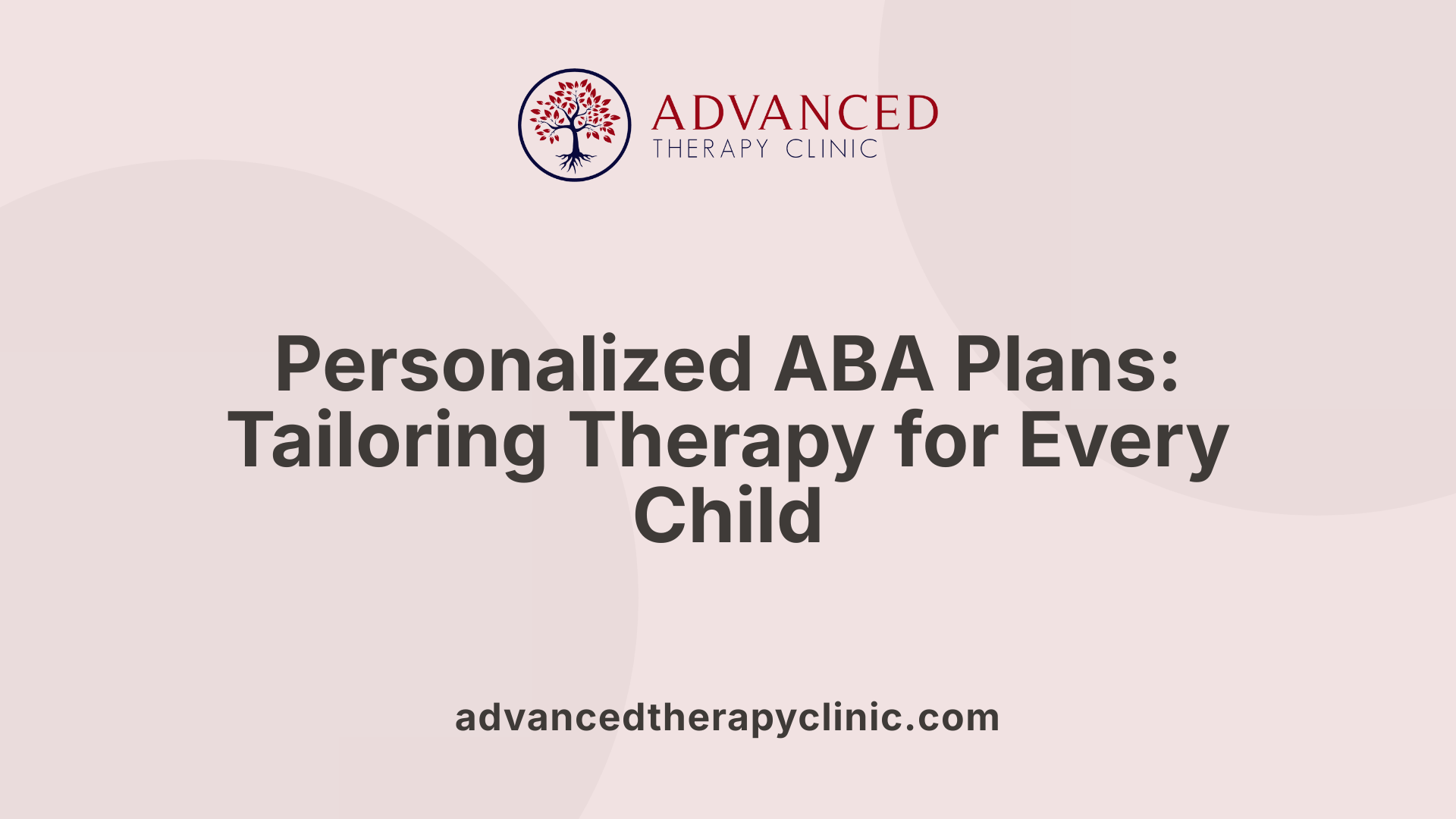
How does ABA therapy customize approaches for each child?
ABA therapy designs individualized treatment plans by carefully assessing each child's unique anxiety triggers, strengths, and challenges. This personalized approach ensures that reinforcement strategies and therapeutic activities align with the child's specific needs, making interventions more effective.
How is therapy adjusted to meet a child's specific needs?
Therapists utilize data-driven decision making to continuously monitor progress and modify techniques accordingly. This might include altering reinforcement schedules, introducing calming strategies, or adapting social skills training based on the child's responsiveness and evolving behavior patterns.
How does ABA therapy ensure skill generalization?
To promote lasting benefits, ABA therapy emphasizes generalization—helping children apply learned coping strategies and social skills across different settings and situations. Collaboration with parents and caregivers plays a vital role, as consistent reinforcement and practice outside therapy sessions supports skill retention and functional use.
Through these personalized and adaptable plans, ABA therapy effectively addresses each child's unique anxiety while fostering meaningful, generalized improvements in behavior and social functioning.
Long-Term Benefits of ABA Therapy in Anxiety Management
How Does ABA Therapy Contribute to Sustained Skill Acquisition?
ABA therapy uses data-driven decision making and individualized plans to ensure that children with autism not only learn new skills but retain them over time. Through consistent reinforcement and the practice of relaxation and coping strategies, children gradually build and maintain important adaptive behaviors that help manage anxiety effectively.
In What Ways Does ABA Therapy Improve Social Interactions?
Social skills training is a core part of ABA therapy, addressing difficulties children with autism often face. Techniques like positive reinforcement and graduated exposure enable children to practice social interactions in safe, structured settings. This repeated exposure fosters confidence and helps reduce social anxiety, supporting better communication and peer relationships.
How Is Quality of Life Enhanced Through ABA Therapy?
By reducing anxiety symptoms and promoting sustained behavioral improvements, ABA therapy leads to significant enhancements in children’s overall quality of life. Improved social skills, decreased anxiety, and acquired coping mechanisms empower children to navigate daily challenges more independently and comfortably. Furthermore, family involvement ensures skills learned in therapy carry over to everyday life, maximizing long-term positive impact.
Early Intervention with ABA: Setting the Foundation to Mitigate Anxiety
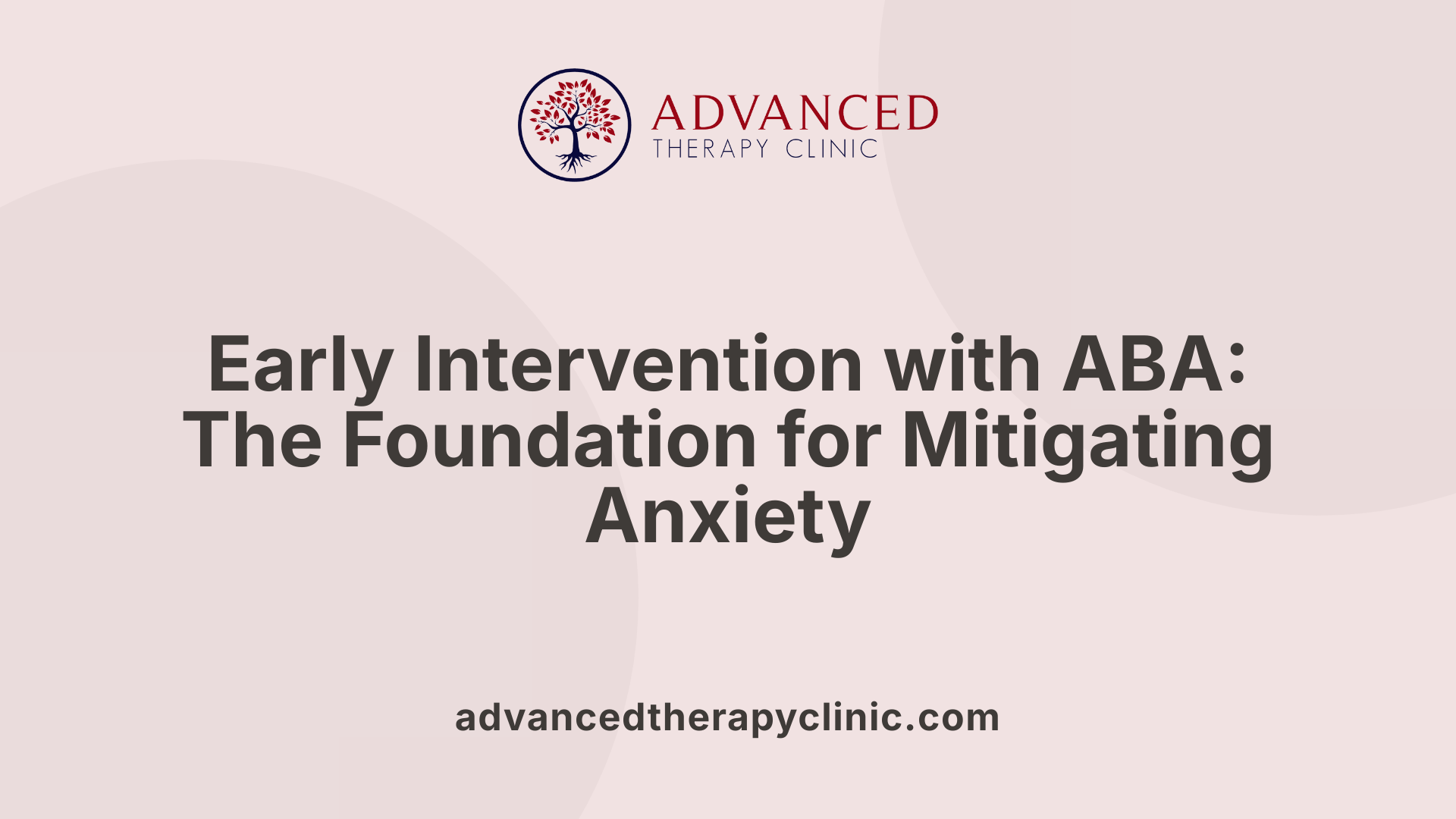
Why Is Early Intervention Important in ABA Therapy?
Early intervention with Applied Behavior Analysis (ABA) therapy plays a crucial role in mitigating anxiety among children with autism. Starting therapy at a young age allows for the identification of anxiety triggers and the development of effective coping strategies before anxiety patterns become deeply ingrained. This proactive approach helps children build adaptive behaviors early, paving the way for smoother social interactions and better emotional management.
How Does Early ABA Therapy Impact Social Skills and Coping Mechanisms?
ABA therapy uses reinforcement techniques and social skills training to help children overcome anxiety-related challenges. Early intervention emphasizes teaching children calming and relaxation techniques and gradually introducing anxiety-provoking situations through methods like systematic desensitization and exposure therapy. These strategies equip children to manage social anxiety effectively and enhance their ability to engage confidently with peers.
What Are the Long-term Benefits of Early ABA Intervention?
Engaging in ABA therapy early often results in sustained skill acquisition and improved social interactions over time. Children who receive early support demonstrate better anxiety management, which leads to an overall improved quality of life. The consistent reinforcement of learned skills, facilitated by active family involvement and individualized treatment plans, ensures that the progress made during therapy continues well into the future.
Integrating ABA Therapy into a Holistic Mental Health Strategy for Children
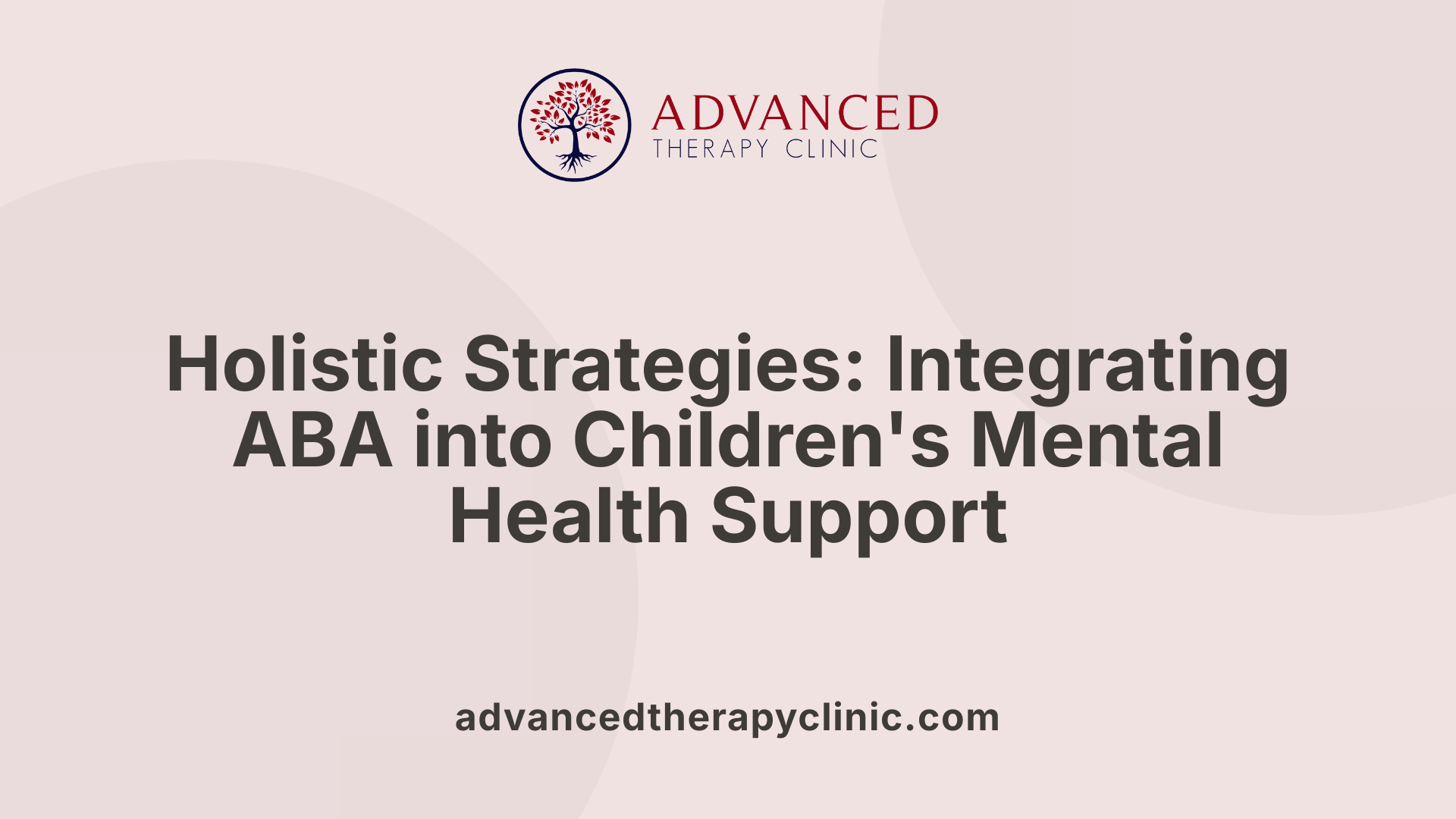
How Does ABA Therapy Complement Other Therapies?
ABA therapy effectively integrates with other therapeutic approaches by focusing on behavior modification through reinforcement and skill-building techniques. When combined with therapies like cognitive-behavioral therapy (CBT) or occupational therapy, ABA's individualized and data-driven methods support a comprehensive approach to managing anxiety and social challenges in children with autism.
What Constitutes a Holistic Approach to Mental Health?
A holistic mental health strategy incorporates multiple facets of a child's well-being, addressing emotional, social, and behavioral aspects. ABA therapy contributes by identifying anxiety triggers, developing coping strategies, and teaching relaxation techniques. Family involvement and collaboration between therapists further enrich this approach, ensuring learned skills are reinforced consistently across different settings.
How Can Families Maximize Therapeutic Outcomes?
Maximizing success requires active participation from parents alongside therapists. Regular updates and tailored treatment plans allow for ongoing adjustments that suit the child's evolving needs. Early intervention with ABA not only helps reduce anxiety symptoms but also nurtures long-term improvements in social skills and adaptive behaviors, ultimately enhancing the child’s quality of life.
The Transformative Power of ABA Therapy for Childhood Anxiety
ABA therapy stands out as a scientifically supported method that not only addresses anxiety symptoms in children, especially those on the autism spectrum, but also equips them and their families with essential skills and coping mechanisms. Through reinforcement-based techniques, social skills training, and family collaboration, ABA facilitates meaningful behavioral improvements and long-term emotional well-being. Early and individualized interventions further enhance its effectiveness, making ABA a cornerstone in the comprehensive care of children navigating anxiety challenges.
References
Recent articles

Expressive Speech Delay 2-Year-Old
Understanding and Addressing Expressive Speech Delay in Toddlers

How Speech Recognition Works
Unlocking the Power of Speech Recognition in Therapy and Healthcare

Autism and Head Size
Understanding the Complex Relationship Between Autism and Head Size

Occupational Therapy in Autism
Enhancing Independence and Quality of Life Through Occupational Therapy in Autism

Do Autistic People Understand Sarcasm?
Navigating the Nuances: Understanding Sarcasm and Social Communication in Autism

Autism Routines
Crafting Effective Daily Structures for Children with Autism

